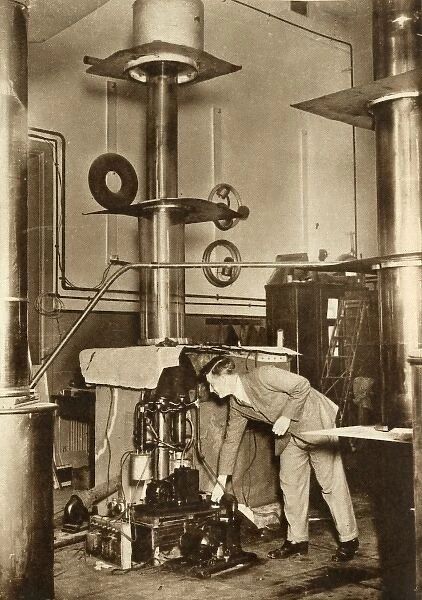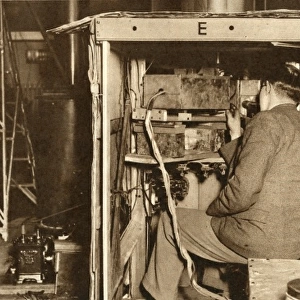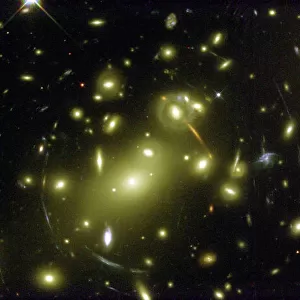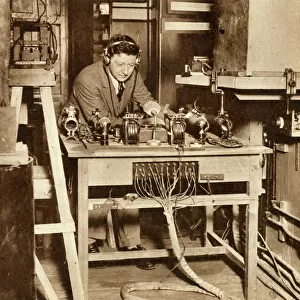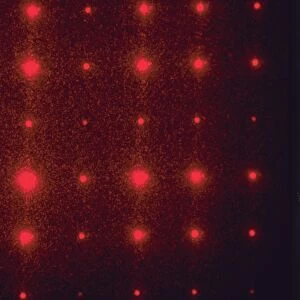Home > Popular Themes > Physicists
Dr J D Cockcroft at work in Cavendish Laboratory
![]()

Wall Art and Photo Gifts from Mary Evans Picture Library
Dr J D Cockcroft at work in Cavendish Laboratory
Dr J D Cockcroft at work in the Cavendish Laboratory, at Cambridge University, adjusting a vacuum-creating pump. Physicists John D Cockcroft and Ernest Ts Walton developed the Cockcroft-Walton accelerator to artificially speed up atomic particles to high energies. Fast-moving protons made from hydrogen were directed towards a lithium target in a vacuum, and the results of this splitting of atoms observed
Mary Evans Picture Library makes available wonderful images created for people to enjoy over the centuries
Media ID 4478703
© Mary Evans Picture Library 2015 - https://copyrighthub.org/s0/hub1/creation/maryevans/MaryEvansPictureID/10469582
1932 Adjusting Apparatus Atom Atomic Cambridge Cavendish Creating Development Laboratory Physicist Physicists Physics Pump Research Scientific Splitting University Vacuum Walton Accelerator Atoms
EDITORS COMMENTS
In this evocative black-and-white photograph, Dr. J.D. Cockcroft is seen intently working in the renowned Cavendish Laboratory at the University of Cambridge. Established in 1874, this prestigious research institute has been a hub of scientific discovery and innovation, and Cockcroft, a brilliant British physicist, was a key figure in its storied history. The year was 1932, and Cockcroft, alongside his esteemed colleague Ernest Walton, had made a groundbreaking discovery: the Cockcroft-Walton accelerator. This revolutionary device, which would change the course of scientific research, was designed to artificially accelerate atomic particles to unprecedented energies. In the image, Cockcroft is meticulously adjusting a vacuum-creating pump, a crucial component of the accelerator. Fast-moving protons, derived from hydrogen, were directed towards a lithium target in a vacuum chamber. The results of this splitting of atoms, known as nuclear fission, were observed through various detection devices. The Cockcroft-Walton accelerator was a significant achievement in the field of nuclear physics and marked a new era in the understanding of atomic structure and behavior. This discovery paved the way for further research in nuclear physics and ultimately contributed to the development of nuclear power and the atomic bomb. This photograph captures a pivotal moment in scientific history, as Dr. Cockcroft, with unwavering focus and determination, works to unlock the mysteries of the atom in the hallowed halls of the Cavendish Laboratory.
MADE IN AUSTRALIA
Safe Shipping with 30 Day Money Back Guarantee
FREE PERSONALISATION*
We are proud to offer a range of customisation features including Personalised Captions, Color Filters and Picture Zoom Tools
SECURE PAYMENTS
We happily accept a wide range of payment options so you can pay for the things you need in the way that is most convenient for you
* Options may vary by product and licensing agreement. Zoomed Pictures can be adjusted in the Cart.

